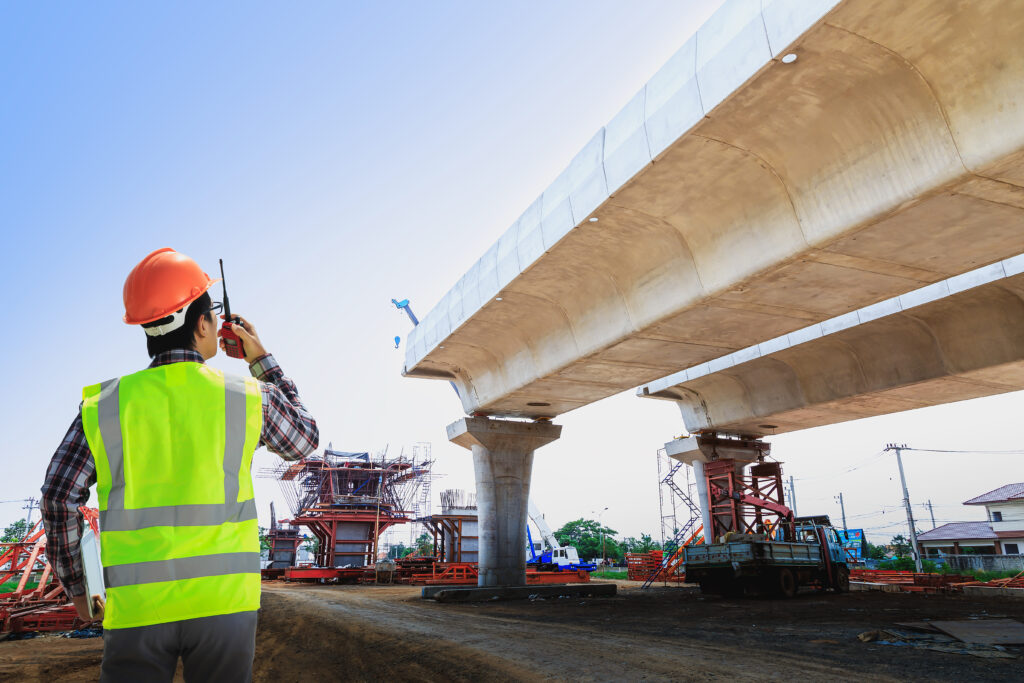About Us

Our Story
The Impact-Echo method and instrument were invented by Mary J. Sansalone of Cornell University. Impact-Echo Instruments, LLC was founded in 1997 by Mary J. Sansalone and William Streett, Professor Emeritus of Engineering at Cornell University. Today, Impact-Echo Instruments is the world leader in developing and marketing nondestructive instruments for evaluating concrete and masonry structures, catering to DOT engineers, construction companies, testing companies and forensic test consultants.
Our systems can measure thickness of concrete slabs such as pavements, retaining walls, and tunnel walls. They can also determine the location, depth and extent of cracks, voids, delaminations, honeycombing and debonding in plain and reinforced structures. Testable structures include plates (slabs, walls, decks, pavements), layered plates (including asphalt on concrete), columns and beams (round, square, rectangular), and hollow cylinders (pipes, tunnels, mineshaft liners, tanks).
In addition, our systems can locate voids in subgrade beneath slabs and pavements, measure depth of surface-opening cracks, locate voids in the grouting in tendon ducts in post-tensioned structures, and locate cracks, voids and other defects in masonry structures where brick or block units are bonded together by mortar.
Experts in the field
Impact-Echo Instruments’ products are based upon research carried out by Dr. Sansalone at the U.S. National Institute of Standards and Technology (NIST), Cornell University and its own research laboratory. The first successful commercial instrument was designed and developed by sister company Innotek of Ithaca, NY in 1998. Impact-Echo Instruments is privately held and based in Cortland, NY, USA.

Meet the Team
Prof. William B. Streett, President
William Streett graduated from the U.S. Military Academy at West Point in 1955, and served in the Army for 23 years, including 15 years on the engineering faculty at West Point. He retired from the Army with the rank of Colonel in 1978 and joined the chemical engineering faculty at Cornell University in Ithaca, New York.
At Cornell, Prof. Streett carried out research in experimental studies of fluids at low temperatures and high pressures, and in computer simulation of molecular liquids. He was appointed Associate Dean of Engineering for Graduate Study and Research in 1981 and Dean of the Cornell College of Engineering in 1984, a post he held for the next 10 years. He retired from Cornell University in 1995.
In 1996, as a result of his interest in acoustic techniques, Professor Streett, working with the inventor of Impact-Echo, Professor Mary Sansalone created the first Windows-based software program for impact-echo. In 1997 they published a book on impact-echo technology and founded a company, Impact-Echo Instruments, LLC, to manufacture and sell impact-echo equipment.
Charles M. CurleyVice President and General Manager
Charles (Chuck) Curley is a dual discipline engineer, cross-trained in both mechanical and electrical engineering. Mr. Curley has more than 30 years of broad experience in the development of both industrial and consumer products. During his career, Mr. Curley has been honored twice for “Outstanding Scientific and Technical Achievement” for his contribution to value engineered product design.
In 1993, Mr. Curley founded Innotek, a consulting firm specializing in engineering design services. His work comprises precision machine design, instrumentation, product cost reduction, motion control, and product conceptualization. Mr. Curley has also testified as expert witness regarding electro-mechanical products in over 30 patent infringement and product defect litigations at the Federal judicial level.
Mr Curley holds a BS in Mechanical Engineering from Syracuse University and a Masters in Electrical Engineering from Cornell University. He holds more than 20 U.S. Patents in the fields of printing technology, facsimile, and computer peripherals.
William (Bill) Weber, Vice President of Sales
After a brief career in the aerospace industry with United Technologies, Mr. Weber joined Corning, Inc. and became the senior manager of the Ceramic Process Research Dept in Sullivan Park, New York. While at Corning he developed unique ceramic extrusion machinery used in the formation of Celcor ™ ceramic substrates for catalytic conversion of automobile exhaust.
After leaving Corning, Mr. Weber started consulting in the ceramics and solar energy fields, and joined Imaging and Sensing Technology Corp. In 1997, Mr Weber joined Professor William B. Streett, forming Impact-Echo Instruments, LLC. At first, he was responsible for setting up a manufacturing facility. He than became the Vice President of Sales and Marketing, the position he currently holds.
Mr. Weber studied Mechanical Engineering and Physics at Yale, Stanford, and Oxford, and holds two US patents.
Prof. Mary J. Sansalone, Advisor
Through a combination of theory, computer simulation, and laboratory and field experiments in the 1980’s, Prof. Mary J. Sansalone invented and perfected a method and an instrument, called Impact-Echo, for nondestructive evaluation of concrete and masonry structures (highways, buildings, bridges, dams, tunnels, etc.). She laid the theoretical and experimental foundation for this work while a Cornell University graduate student (1983-86) working with advisors at Cornell and the U.S. National Bureau of Standards. After she joined the Cornell University faculty in 1987, she and her graduate students developed a wide range of practical applications and invented a portable field instrument, publishing nearly 90 journal articles and research reports.
Responding to a need from industry, she was the lead author of a book published in 1997 on Impact-Echo and its applications in the testing of concrete and masonry structures. That book has been sold in 17 countries, and has been translated into several foreign languages, including Japanese and Chinese. Impact-echo instruments are now manufactured in several countries and are used worldwide for nondestructive testing of concrete and masonry structures. Learn more about the book.